Temporary waivers again allow E15 this summer—and beyond for select Midwestern states—but nationwide legislation, expedited state rulemakings and online resources for retailers could help in the ongoing push to expand E15 to be as ubiquitous as E10.
By Lisa Gibson
An emergency Reid Vapor Pressure (RVP) fuel waiver from the U.S. EPA issued April 28 of this year allows E15 blends to be sold this summer nationwide. It is the fourth consecutive year of waivers and a temporary win for retailers, producers, and consumers, but as in previous years, it does not lay a foundation for permanent year-round sales of E15.
The EPA allows summertime sales of E10 nationwide with a 1-psi RVP waiver. That waiver was extended to E15 in 2019, but a 2021 court ruling reversed the waiver for E15, after it was challenged by oil groups. E15 has received emergency summertime waivers each year, however, from 2022 through 2025.
In addition, the current EPA emergency waiver effectively delayed the April 28, 2025, removal of the 1-psi RVP summer waiver EPA approved in eight Midwestern states—Illinois, Iowa, Minnesota, Missouri, Nebraska, Ohio, South Dakota, and Wisconsin—which would also have provided RVP waiver parity for E15 and E10, allowing summertime E15 sales in those states.
But Ron Lamberty, chief marketing officer with the American Coalition for Ethanol, says this “waiver from the waiver” is essentially a workaround designed by the states to keep E15 available should EPA or Congress fail to address the issue permanently. A nationwide legislative fix to the E15 limitation is still the ideal, he says. “The solution that will benefit retailers and consumers most and would see the fastest growth will be legislation allowing year-round E15.” EPA agrees: “A legislative solution before the summer driving season to allow for the permanent, year-round sale of E15 nationwide is an option being negotiated in Congress,” EPA said in February of 2025.
Bipartisan legislation to allow E15 year-round was ultimately left on the cutting room floor of the continuing resolution Congress passed just before the new year, but the ethanol industry hopes more opportunities will present themselves in 2025.
Meanwhile, California fights its own E15 battle.
California’s Ethanol Climate
California still prohibits E15, in fact, though retailers and legislators are increasing the pressure on the California Air Resources Board (CARB) to finalize an E15 rule, given the state’s emphasis on affordability in the face of high costs of living. “That is paramount right now in Sacramento,” says Jeff Wilkerson, government policy and regulatory affairs manager with California-based Pearson Fuels. “Between the high housing prices, high cost of gasoline, insurance challenges, to date, they have not really tackled the affordability angle.”
AB 30, a legislative attempt to allow E15 in California, passed the State Assembly on June 4. In early July, the Senate’s Transportation Committee and Environmental Quality Committee passed the bill. AB 30 will need to move through the Senate’s Appropriations Committee before being put to a full floor vote. The bill would legalize E15 immediately while CARB finalizes its E15 rulemaking process. Wilkerson says CARB has consistently explained the delay as a symptom of understaffing. In response, California Gov. Gavin Newsom included $2.3 million for CARB in his May budget proposal, aimed at providing the resources the agency needs to finalize its E15 rulemaking, which was included in the final budget Gov. Newsom signed July 1.
But Wilkerson cautions that the rulemaking process could take up to a year, even with the added funds in place. “It’s important to realize that even with a budget request, it’s not a done deal,” he says. “It still has to go through an actual rulemaking, and in that process, we would learn how you would be able to offer E15—are there any extra regulations around it, is there a need for a warning sticker?”
Wilkerson says AB 30 struggled in the Senate last year but looks more favorable this year. “I don’t think it’s a slam dunk in the Senate, but the affordability angle is really big right now and having something cleaner than gasoline is certainly important.”
Passing AB 30, he says, would be a vote of confidence for ethanol. “Whether or not California has truly supported ethanol before is debatable,” he says. “Approval of AB 30 would be a recognition that the industry continues to get cleaner and, more importantly, can get even cleaner as time goes on and ethanol plants continue to make improvements. … And that there’s consumer acceptance at the retail level that this is something that can meaningfully reduce prices.”
The timing is right for touting E15’s clean benefits, as the ethanol industry explores carbon capture and storage (CCS) options. “We use CCS as an example of how the industry can continue to lower its carbon intensity,” Wilkerson says. “Our conversation has been around more vehicles capable of using fuel, and it’s fuel that continues to get cleaner and cheaper.”
Meanwhile, E85 use in California grows, and Wilkerson says efforts are ongoing to continue and increase that growth, through streamlined approval of aftermarket E85 conversion kits. Forty-nine states allow them, but CARB has a separate regulation manufacturers must navigate to get approval. “It is completely onerous in terms of how complicated and expensive it is,” Wilkerson says. “We’ve been telling them that for two years now.”
CARB says understaffing has impacted its E85 conversion kit rulemaking as well, so the industry has proposed a solution. “What we’re saying is allow us to use EPA approval in place of CARB approval until you do a rulemaking that clarifies what the process is for getting a kit approved,” Wilkerson says. “Until they find something like an E85 conversion kit that allows consumers to switch fuels during a price spike, they don’t have any options. We’re presenting an alternative. Legislators are responsive to that, and CARB is becoming more responsive to it.”
Retailers are on board because it allows them to sell a cheaper (by up to $2 per gallon), cleaner fuel, and research shows consumers might be interested. Data from France shows consumers have purchased more than 250,000 conversion kits, Wilkerson cites.
Despite new models from GM, flex fuel vehicles made during the boom of the mid-2010s are getting older and that presents a problem for the state’s fleet. “So that’s a real danger for the state—you take those vehicles off the road and then you have fewer consumers who are able to choose something other than gasoline and those price spikes become even more apparent,” Wilkerson says.
Pearson Fuels added more than 60 E85 sites in 2024 and announced their 400th location in January. They expect to add another 60 sites this year, Wilkerson says.
Calculating the Benefits
Beyond California, retailers across the country can benefit from selling ethanol blends, some with profitable state incentives to back them.
ACE will launch its E15 “Do the Math” calculator in July, accessible on its FlexFuelForward.com website. The tool allows retailers to calculate the E15 cost and compare it to E10 and flex fuel. “When you talk to retailers about numbers, you have to show numbers,” Lamberty says.
It’s a replacement for the countless spreadsheets Lamberty created for each state back when ACE was educating retailers about E10. "Back when E10 was getting around the country, ethanol was more expensive than gas, so the only way it made sense for marketers to buy E10 rather than E0 was with the lower tax rate. We helped people understand the math. In areas where local marketers offered ethanol blends, it disrupted the status quo and irritated the bigger players—and that friction is exactly what helped drive ethanol into the market."
The Do the Math calculator is accessible for retailers 24/7 and incorporates rack and blend prices, as well as relevant state taxes and incentives.
Several states have implemented incentives in recent years. Nebraska has designated a per-gallon tax incentive that began in 2024 and peaks this year at 9 cents, tapering 1 cent each year through 2028. Ben Rhodes, executive director of the Nebraska Ethanol Board, says the data isn’t in yet, but he anticipates the incentive will have an impact on E15 sales in the state. “We certainly appreciate that they’re there now, and we hope they continue to drive good market incentives for retailers for some time to come,” he says, adding that discussions around new or extended legislation will come once the data is compiled.
South Dakota has a tax refund in place for up to 5 cents per gallon of E15 sold between 2025 and 2030. Missouri implemented a 5-cent per-gallon tax credit for blends E15 to E85, and Iowa offers retailers 9 cents per gallon for E15 and 16 cents per gallon for E85. Illinois incentives, approved in 2023, reduce sales tax on E15 by 10%, on E20 to E50 by 20%, and on E85 by 100% through 2028.
These and other even longer-standing ethanol blend incentives are accounted for on the Do the Math calculator.

DO THE MATH: A new calculator ACE is implementing on its FlexFuelForward.com website allows retailers to calculate the E15 cost and compare it to E10 and flex fuel.
FlexFuelForward.com also features ACE’s well-known E15 Flex Check tool to determine infrastructure compatibility for retailers. The tool’s usefulness has been touted by the EPA, Lamberty says, though he points out that most retailers can sell E15 with their existing infrastructure. “For retailers, we have to continue reminding them they can almost all put E15 in their existing equipment.” We remind retailers equipment is tested using 15% ethanol, dispenser manufacturers’ warranties cover E15, and underground storage tank systems listed for gasoline and alcohol blends are compatible with up to 100% of either,” he says.
Infrastructure support is still making its way into the marketplace from USDA’s Higher Blends Infrastructure Incentive Program (HBIIP) but it’s unclear whether there are remaining unrewarded funds or whether the program will continue. Initially frozen when President Donald Trump took office, $260 million in obligated funds were re-released in March 2025, part of $537 million announced supporting 543 projects in 29 states.
The HBIIP program can cause confusion, Lamberty says, given upgrades are not usually needed for E15. “Telling station owners, ‘You can use your existing equipment,’ followed by, ‘There’s money available if you want to upgrade your infrastructure,’ can be a confusing message. Fortunately, when retailers add new products—inside the store or out—they often put in some kind of new equipment to draw attention to it, so the message isn’t completely contradictory if you understand the business.”
A bigger hurdle than infrastructure is the “hassle” created by selling E15, Lamberty says. “The fact is they don’t have to do any of that stuff with their other fuels—you don’t have to worry about the labels for unleaded or premium or diesel once they’re installed or changed. You don’t have to worry about whether you have a different size orange sticker. But with E15, the rules were made so it’s kind of a hassle to sell it.”
Switching labels twice a year isn’t as simple as it sounds and fines can be levied if it’s not done properly. “Even with the waivers and a lot of infrastructure money, the bulk of the stations still aren’t selling E15,” Lamberty says.
FlexFuelForward.com was designed to be a marketer-to-marketer tool with success stories from those who “sold higher blends of ethanol and lived to tell about it,” he adds. “So, marketers would be comfortable with it because basically, what most people trust, regardless of what field you’re in, is 'someone like me.’”
While it might seem the E15 discussion has dragged on, Lamberty points out that thoroughly implementing E10 nationwide took about 35 years.
“It’s been 14 years since E15 was approved,” he says. “So, if we get E15 nationwide in the next few years, we’ll be 15-20 years ahead of E10.”
Author: Lisa Gibson
Sage & Stone Strategies
Lisa.gibson@sageandstonestrategies.com





